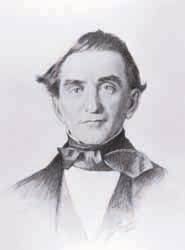
Fort Snelling is a former military fortification and National Historic Landmark in the U.S. state of Minnesota on the bluffs overlooking the confluence of the Minnesota and Mississippi Rivers. The military site was initially named Fort Saint Anthony, but it was renamed Fort Snelling once its construction was completed in 1825.
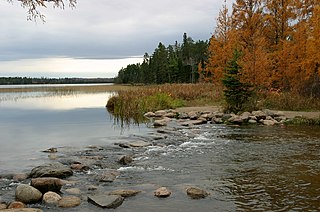
Itasca State Park is a state park of Minnesota, United States, and contains the headwaters of the Mississippi River. The park spans 32,690 acres (132.3 km2) of northern Minnesota, and is located about 21 miles (34 km) north of Park Rapids, Minnesota and 25 miles (40 km) from Bagley, Minnesota. The park is part of Minnesota's Pine Moraines and Outwash Plains Ecological Subsection and is contained within Clearwater, Hubbard, and Becker counties.

Alexander Ramsey was an American politician. He served as a Whig and Republican over a variety of offices between the 1840s and the 1880s. He was the first Minnesota Territorial Governor.
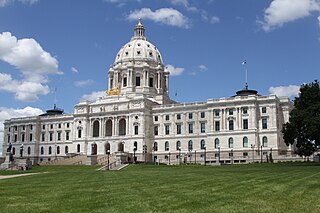
The Minnesota State Capitol is the seat of government for the U.S. state of Minnesota, in its capital city of Saint Paul. It houses the Minnesota Senate, Minnesota House of Representatives, the office of the Attorney General and the office of the Governor. The building also includes a chamber for the Minnesota Supreme Court, although court activities usually take place in the neighboring Minnesota Judicial Center.
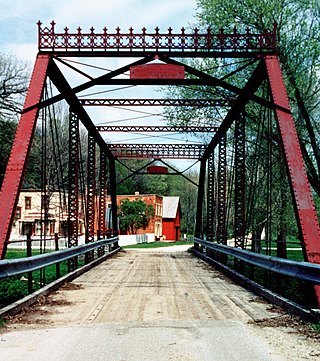
Forestville is a ghost town in section 13 of Forestville Township in Fillmore County, Minnesota, United States. The nearest communities are Wykoff, to the northwest, and Preston, to the northeast.

The Lower Sioux Indian Community, also known as the Mdewakanton Tribal Reservation, is an Indian reservation located along the southern bank of the Minnesota River in Paxton and Sherman townships in Redwood County, Minnesota. Its administrative headquarters is two miles south of Morton. The reservation is located southeast of Redwood Falls, the county seat.

The Lower Sioux Agency, or Redwood Agency, was the federal administrative center for the Lower Sioux Indian Reservation in what became Redwood County, Minnesota, United States. It was the site of the Battle of Lower Sioux Agency on August 18, 1862, the first organized battle of the Dakota War of 1862.

Fort Abercrombie, in North Dakota, was a United States Army fort established by authority of an Act of Congress, March 3, 1857. The act allocated twenty-five square miles of land on the Red River of the North in Dakota Territory to be used for a military outpost, but the exact location was left to the discretion of Lieutenant Colonel John J. Abercrombie. The fort was constructed in the year 1858. It was the first permanent military installation in what became North Dakota, and is thus known as "The Gateway to the Dakotas". Abercrombie selected a site right on the river. Spring flooding was a problem and the fort was abandoned. However, in 1860 the Army returned, moving the fort to higher ground.

The Alexander Ramsey House is a historic house museum in Saint Paul, Minnesota, United States; the former residence of Alexander Ramsey, who served as the first governor of Minnesota Territory and the second governor of the state of Minnesota. It was listed on the National Register of Historic Places in 1969. It is also a contributing property to the Irvine Park Historic District.
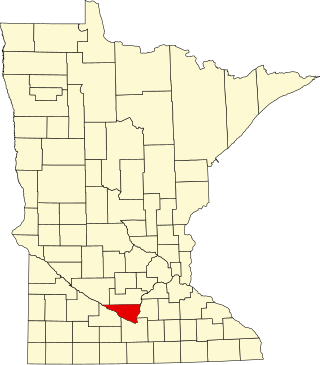
This is a list of the National Register of Historic Places listings in Nicollet County, Minnesota. It is intended to be a complete list of the properties and districts on the National Register of Historic Places in Nicollet County, Minnesota, United States. The locations of National Register properties and districts for which the latitude and longitude coordinates are included below, may be seen in an online map.

Birch Coulee Battlefield in Renville County, Minnesota, United States, was the site of the Battle of Birch Coulee, the costliest military engagement for U.S. forces during the Dakota War of 1862. It is now a historic site with self-guided trails and markers interpreting the battle from both sides. Birch Coulee was nominated to the National Register of Historic Places for having state-level significance in military history, and was listed in 1973.

The Banfill Tavern, also known as the Locke House, is a historic building in Fridley, Minnesota, United States. It was built in 1847 on the east bank of the Mississippi River and has served variously as an inn, a logging camp office, a private home, a dairy farm, a post office, and a summer home. It is now owned by Anoka County and, until April 2022, housed the non-profit Banfill-Locke Center for the Arts. The building stands within Manomin County Park, and the art center is a partner site of the Mississippi National River and Recreation Area.

The Comstock House is a historic house museum in Moorhead, Minnesota, United States. It was built for Solomon Comstock and his family from 1882 to 1883 in a mix of Queen Anne and Eastlake style. Comstock (1842–1933) was one of Moorhead's first settlers and an influential figure in business, politics, civics, and education in the growing city and state.

The Cottonwood County Courthouse is the seat of government for Cottonwood County, Minnesota, United States, located in the city of Windom. It has been in continual use since its dedication in 1905. It was listed on the National Register of Historic Places in 1977 for its state-level significance in the themes of architecture and art. It was nominated for the neoclassicism expressed throughout the building, from the exterior architecture to the interior design and artwork.
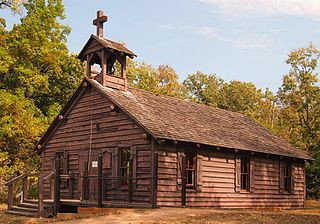
Lac qui Parle Mission is a pre-territorial mission in Chippewa County, Minnesota, United States, which was founded in June 1835 by Dr. Thomas Smith Williamson and Alexander Huggins after fur trader Joseph Renville invited missionaries to the area. "Lac qui Parle" is the French translation of the native Dakota name, "Mde Lyedan," meaning "lake which speaks". In the 19th century, the first dictionary of the Dakota language was written, and part of the Bible was translated into that language for the first time at a mission on the site of the park. It was a site for Christian missionary work to the Sioux for nearly 20 years. Renville was related to and had many friends in the Native community, and after his death in 1846, the mission was taken over by the "irreligious" Martin McLeod. The relationship between the mission and the Dakota people worsened, and in 1854 the missionaries abandoned the site and relocated to the Upper Sioux Agency.

MNopedia: The Minnesota Encyclopedia is a free English-language encyclopedia project from the Minnesota Historical Society. Funded through a Legacy Amendment Arts and Cultural Heritage Fund grant, it is the first online encyclopedia about Minnesota, a "resource for reliable information about significant people, places, events, and things in Minnesota history". Approved by Minnesotans on November 4, 2008, planning took place in 2010, the site was built in 2011 and was online on August 15; initial funding for 2010 and 2011 was $215,000. Many of the articles produced by the encyclopedia are licensed under a Creative Commons Attribution-ShareAlike 3.0 Unported License as are some of its multimedia files.
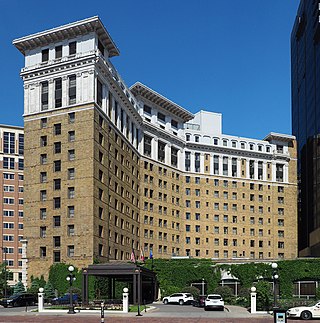
The Saint Paul Hotel is a landmark hotel in downtown Saint Paul, Minnesota, United States. It was built in 1910 overlooking Rice Park during the "First Great Age" of skyscraper construction. The Renaissance revival style building was one of the most prominent buildings in St. Paul in its era and was nicknamed "St. Paul's Million-Dollar Hotel." It operated for 69 years before closing in 1979 due to declining business. It was renovated and reopened in 1982. It was listed in the Historic Hotels of America program of the National Trust for Historic Preservation in 1991.

